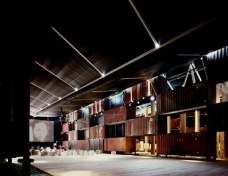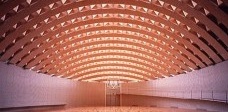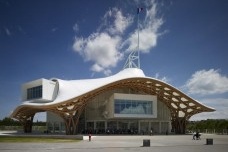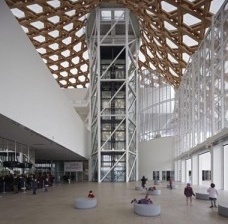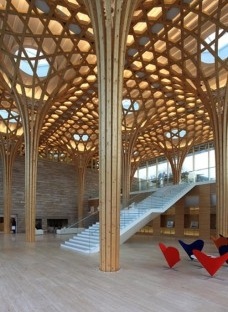We architects are facing the challenges of a long-term disciplinary crisis, while the medias keep feeding us with brand new buildings signed by the world stars of architecture, and the apparently urgent issue of global warming is only generating a flaw debate over sustainability - currently masked under meaningless labels. These subjects are (should be) the origin of a healthy debate.
But there is a moment when architects can't disagree: when a natural disaster happens, a rare sense of consensus is produced. This does not mean direct commitment of all professionals with the issue, but at least our eyes are all turned to the same direction and we are supposed to reunite all our forces and skills in order to ease the pain of homeless people.
Among a long list of possible natural disasters, some of them are short enough to cause an unexpected impact on the built environment. Houses and equipment constructed along generations are washed away and destroyed in minutes. Last week, we witnessed the fury of a chain of disasters with an impact that might be perpetuated for years. Following a 9 Richter scale earthquake in the northeast region of Japan, a tsunami erased whole cities and triggered an even more dangerous and challenging problem: the radioactivity of a collapsing nuclear plant.
Under these circumstances, it is then notorious to attend to a lecture by Japanese architect Shigeru Ban, who was in Barcelona yesterday evening at the IaaC. We should note that Shigeru Ban, who has dedicated a long part of his career to temporary architecture for refugees or victims of disasters, was extremely committed to his professional schedule in Europe and wouldn’t fly back to Japan before finishing the appointments he had with institutions in Germany and Spain.
One of the questions raised by Ban in his lecture is the dichotomy between permanent and temporary architecture. As an example, he showed the paper church designed for Kobe’s Vietnamese catholic community, which is still being used (now assembled in Taiwan). He made a twist and criticized constructions designed and built using ordinary methods, sometimes falling apart due to the use of low-quality material by ambitious developers. The paper tube, an industrial "waste" used by Shigeru Ban in his projects, has proved its endurance. His designs incorporate, for instance, beer plastic boxes that are used as a ventilated base, and donations of plastic canvas for the roofing. Budget is a constant challenge, and Shigeru Ban has experienced the lowest budgets possible, 50 US dollars per unit, in Rwanda in 1999, when the United Nations High Commissioner for Refugees asked him to provide a design for cheap temporary sheltering for the victims of the civil war.

PAPER EMERGENCY SHELTERS FOR UNHCR - Byumba Refugee Camp, Rwanda, 1999 [shigerubanarchitects.com]
Another interesting approach pointed by Shigeru Ban is the importance of both assembling and disassembling processes. Temporary structures need to be a simple assemblage of elements, through a work that has to be easily learnt by local inhabitants so they can keep working effectively without the presence of the rescue teams. Using the same logic, the disassembling is a fundamental argument to support the use of paper tube: recycling and reusing is assured whenever the victims are supplied with a permanent shelter by the local authorities. If the government won’t build permanent housing, as it is the case of projects he showed in Africa, Haiti and Turkey, at least the quality of the design would be able to uphold the dignity of those families, if compared to the atrocious standards of living without this intervention.

PAPER EMERGENCY SHELTER FOR HAITI - Port-au-Prince , Haiti, 2010 [shigerubanarchitects.com]
Given that natural disasters are one of his main concerns, Ban has been following closely last week's Japanese catastrophe, and has prepared some strategies and design in connection with his office while being away. Inspired by his previous experiences and some experimental designs developed with his students, Ban took some minutes to explain the audience his strategy to be apply as soon as he arrives in Japan. The reports received from Japan say that thousands of families are being sheltered inside sports gymnasiums.

PAPER PARTITION SYSTEM- Fukuoka,Japan,2005 Fujisawa,Japan,2006 [www.shigerubanarchitects.com]

PAPER PARTITION SYSTEM- Fukuoka,Japan,2005 Fujisawa,Japan,2006 [www.shigerubanarchitects.com]
Based on his experience with the Kobe earthquake, Ban explained how families who share the same open space and live together for several days may suffer heavy stress. In Kobe, Ban designed a “cubicle” of wooden planks, but the idea was rejected at that time by the authorities. This time, Ban will apply a design, developed in 2005, consisting of a system of columns and beams made with paper tubes, wooden joints and paper rolls that can be unrolled whenever the families need more intimacy. This simple structure can be easily assembled in one hour.
Parallel to the disaster relief projects, Shigeru Ban presented buildings that illustrate his constant research and experiment on the formal and structural aspects of architecture. When dealing with high-standard commissions, Ban's design pursues the constant evolution of construction systems, based on meshes and trusses. In this sense, he is not only sensible to the surrounding environment (lato sensu), but also in terms of space. The intelligent use of alternative and unexpected materials (as paper tubes or cargo containers) is pushed to the edge. The recently open Pompidou centre in Metz and the Hannover Japanese pavilion are beautiful structures that reveal an extremely sensitive architect, who use technology in a very honest and uncomplicated way. Western architects have a lot to learn from this approach, not only in terms of technology and simplicity, but also of social responsibility initiatives.
about the author
Flavio Coddou is an architect and one of the editors of Vitruvius Spain



![PAPER LOG HOUSES - Kobe, Japan, 1995 [shigerubanarchitects.com]](https://vitruvius.com.br/media/images/magazines/grid_9/a3a366846361_plhk.jpg)
![PAPER LOG HOUSES - Kobe, Japan, 1995 [shigerubanarchitects.com]](https://vitruvius.com.br/media/images/magazines/grid_9/96305ac233df_plhinterior.JPG)
![Takatori Catholic Church<br />Bujdosó Attila [wikicommons]](https://vitruvius.com.br/media/images/magazines/grid_9/83ba311ba959_takatori_catholic_church.JPG)
![Shigeru Ban's temporary studio, Paris, France, 2004 [shigerubanarchitects.com]](https://vitruvius.com.br/media/images/magazines/grid_9/2a3dfb7d5383_pts02.jpg)
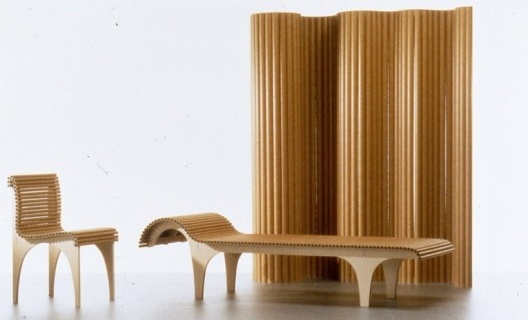
![PAPER LOG HOUSES - Kobe, Japan, 1995 [shigerubanarchitects.com]](https://vitruvius.com.br/media/images/magazines/gallery_thumb/a3a366846361_plhk.jpg)
![PAPER LOG HOUSES - Kobe, Japan, 1995 [shigerubanarchitects.com]](https://vitruvius.com.br/media/images/magazines/gallery_thumb/96305ac233df_plhinterior.JPG)
![Takatori Catholic Church<br />Bujdosó Attila [wikicommons]](https://vitruvius.com.br/media/images/magazines/gallery_thumb/83ba311ba959_takatori_catholic_church.JPG)
![Shigeru Ban's temporary studio, Paris, France, 2004 [shigerubanarchitects.com]](https://vitruvius.com.br/media/images/magazines/gallery_thumb/2a3dfb7d5383_pts02.jpg)

